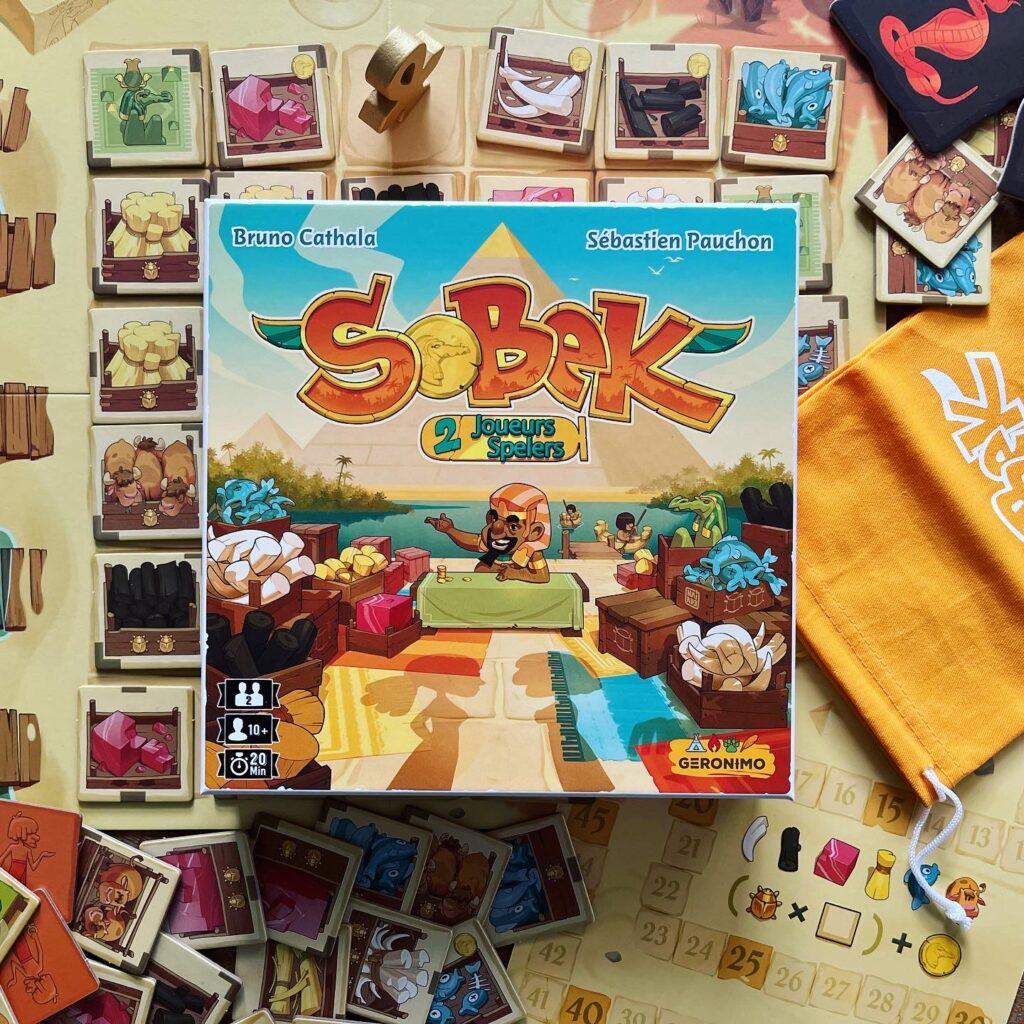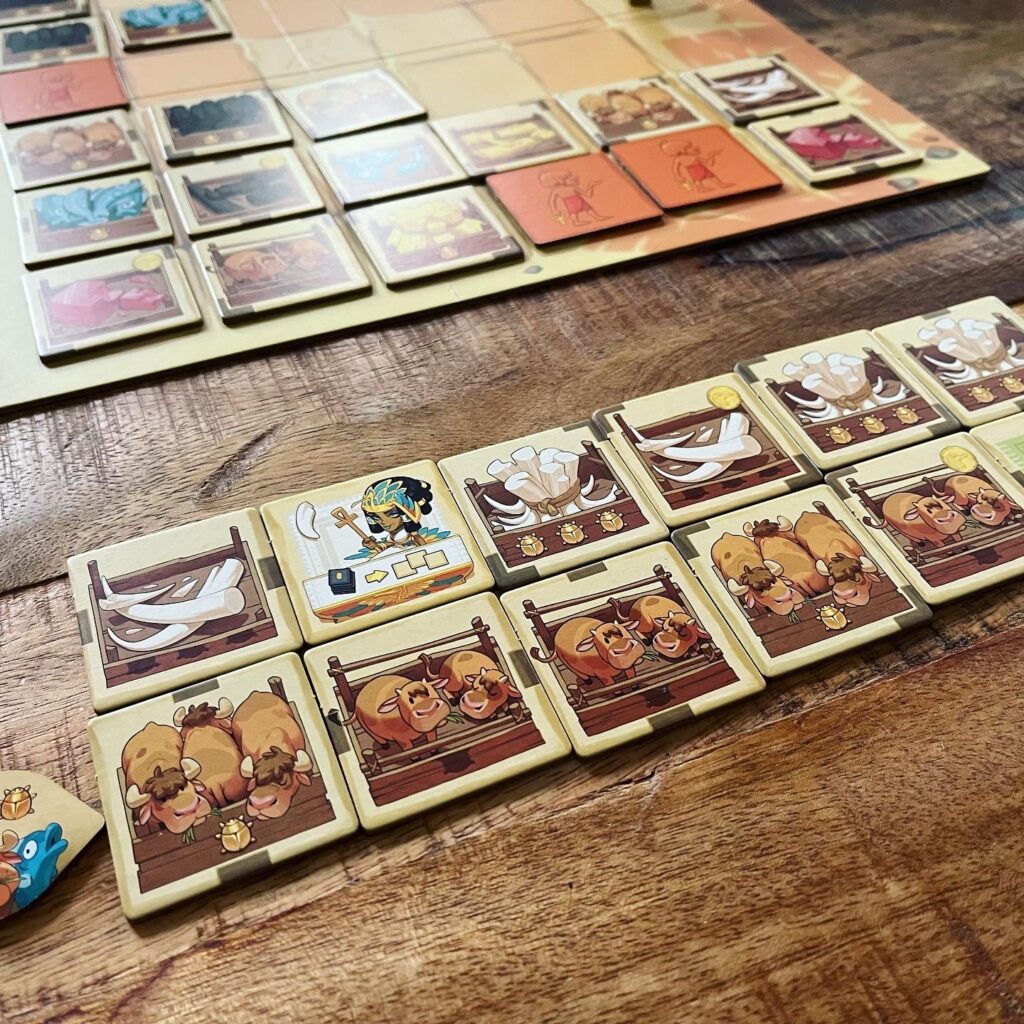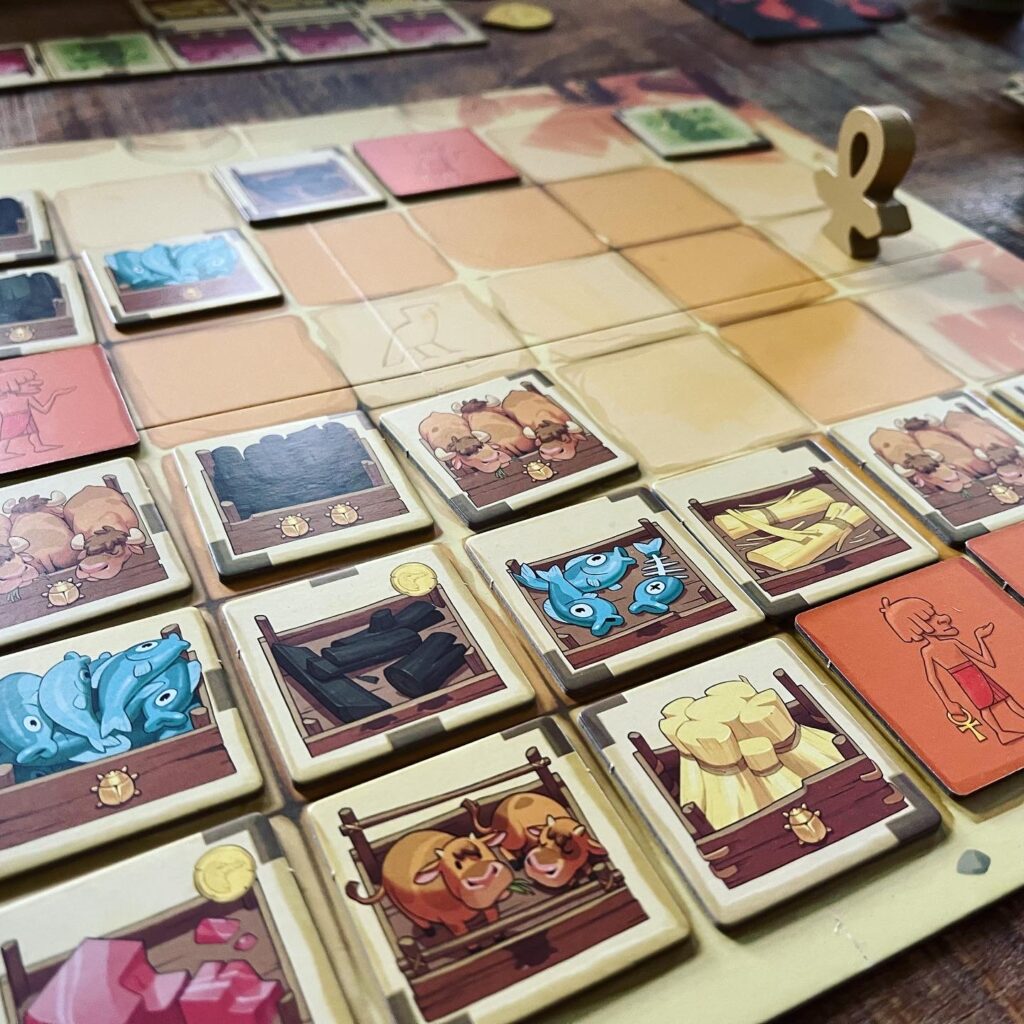Have you ever experienced such heat that you were able to sweat out an entire river? The story goes that Sobek, one of the gods in Egyptian mythology, created the Nile from his bodily fluids. Yuck. The presence of the Nile ensured fertility on its banks and, in addition to being god of war and procurer of cute crocodile hats, Sobek also became god of fertility. All the more reason to build a beautiful temple to worship this god, the inhabitants of one Egyptian village thought. Soon, people gathered around the building site and a large market formed where merchants (the players) wanted to reap the benefits of all the activity. In this two-player edition of Sobek, a dynamic duo of traders will battle for a monopolistic market position by trading in cows, ivory and other goods. Beware: corruption is lurking. Can you capture the most wealth or will you run away from the crocodile?

Sobek 2 Players is an abstract strategy game for (as the name implies) two players in which these players collect and sell sets of tiles (goods and characters) to earn points and coins. Excellent! On the table is a board with open goods tiles and closed character tiles. The starting player chooses one of the four tiles in the middle and places the Ankh pawn on the spot of the tile he just removed. Each good tile shows a type of good and an ‘orientation’. Sometimes there are also scarabs or a coin on goods tiles. There are also jokers and a Sobek statue is depicted on that tile. Character tiles show a colourful figure, an effect and a type of good or Sobek statue. During a turn, a player may 1) take tiles, 2) sell a set, or 3) apply the effect of an acquired character tile.

If a player wants to take tiles, he or she moves the Ankh pawn in a straight line in the orientation where the Ankh pawn was placed during the previous turn. The player then moves the Ankh pawn to an available tile and takes it. If there is a coin on the tile, instead of taking the tile in hand a player may also discard the tile to take a coin from the bag. These coins have different values that earn victory points at the end of the game. The player then places the Ankh pawn in the orientation depicted on the tile, or in the case of a character tile, in an orientation of his choice. All tiles that a player has skipped are placed on that player’s corruption pile. The acquired tile is taken into the player’s hand. If the Ankh pawn cannot move, but the player still wants to acquire tiles, the ‘market’ can be replenished.

A player can also sell a set of at least three equal goods, where a Sobek statue is a good of choice and character (if the depicted good matches) can be used as a good. The set is placed in front of the player and this set can be replenished in a later turn by playing another set of at least three equal goods. Each time a player discards a set, this player may take a pawn token and apply a special effect. Finally, players can also choose to apply the effect of a character tile by discarding it. However, characters already used in a set cannot be used again as an effect.

The game is over as soon as a player cannot take any of the available actions. The player with fewer tiles on the corruption pile may take at least one coin from the bag. Players earn points for the number of scarabs multiplied by the amount of tiles in a specific set. Players also get (extra) points for certain prairie tiles and coins. Sobek 2 Players is a very challenging strategy game for two players with more than enough depth and variety and a healthy portion of luck (due to the unknown value of the coins). An excellent game for two players!



